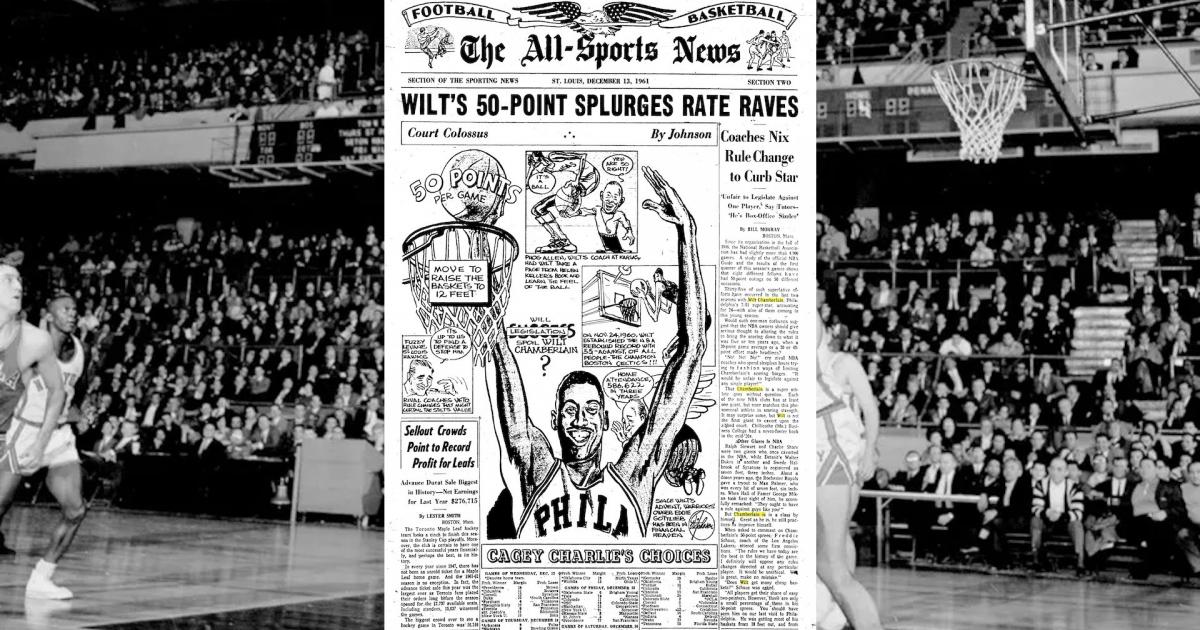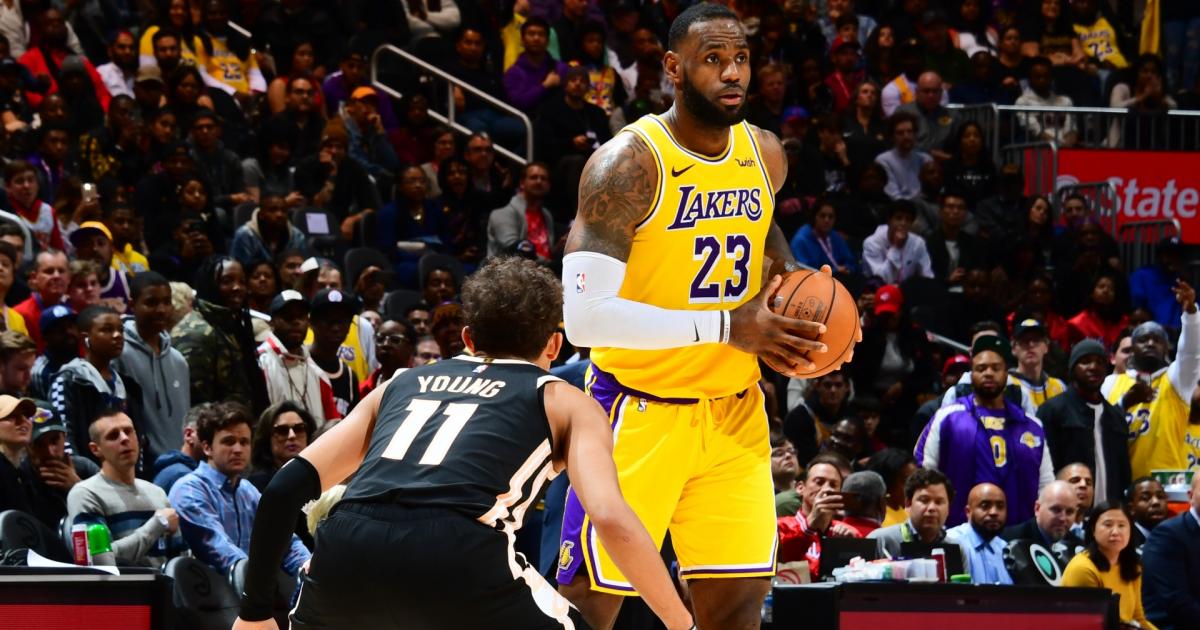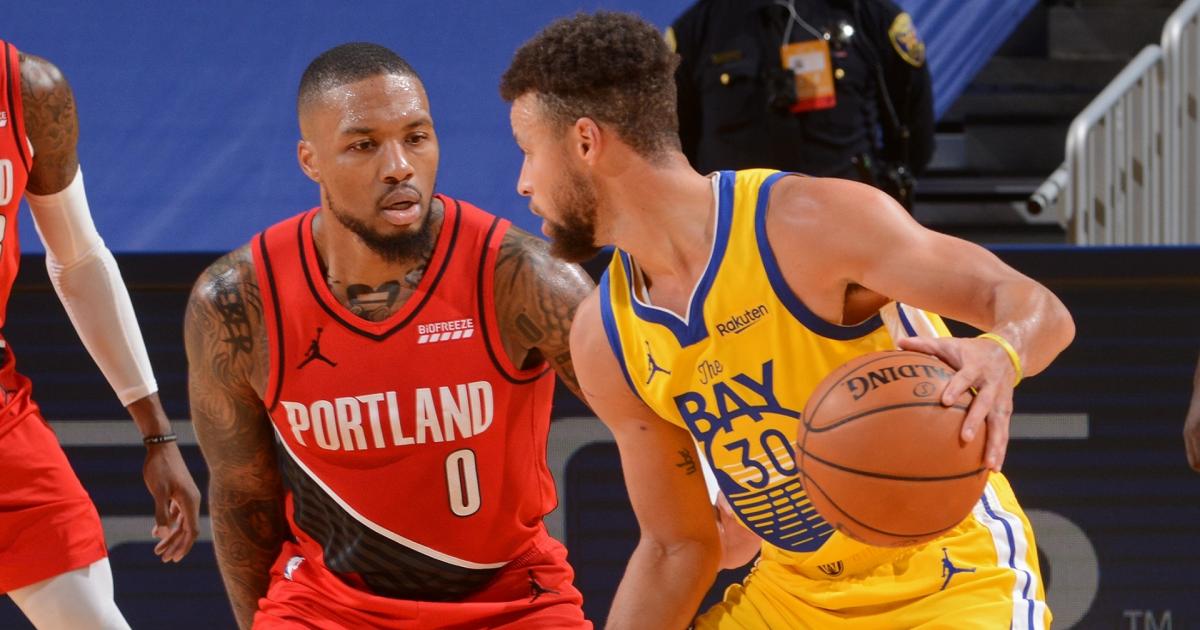
The following story, by correspondent Bill Mokray, first appeared in the Dec. 13, 1961, issue of The Sporting News, under the headlines, “Wilt’s 50-point Splurges Rate Raves • Coaches Nix Rule Change to Curb Star • ‘Unfair to Legislate Against One Player,’ say Tutors — ‘He’s Box Office Sizzler’”.
BOSTON, Mass. — Since its organization in the fall of 1946, the National Basketball Association has had slightly more than 4,500 games. A study of the official NBA Guide and the results of the first quarter of this season’s games shows that eight different fellows have had 50-point outings on 50 different occasions.
Thirty-five of such superlative efforts have occurred in the last two seasons with Wilt Chamberlain, Philadelphia’s 7-1 super star, accounting for 24 — with nine of them coming in this young season.
Would such one-man outbursts suggest that the NBA owners should give serious thought to altering the rules to bring the scoring down to what it was five or ten years ago, when a 20-point game average or a 30- or 40-point effort made headlines?
“No! No! No!” cry rival NBA coaches who spend sleepless hours trying to fashion ways of limiting Chamberlain’s scoring binges. “It would be unfair to legislate against any single player!”
That Chamberlain is a super athlete goes without question. Each of the nine NBA clubs has at least one giant, but none matches this phenomenal athlete in scoring strength. It may surprise some, but Wilt is not the first giant to cavort upon the ribbed court. Chillicothe (Mo.) Business College had a seven-footer back in the mid-’20s.
Other Glants in NBA
Ralph Siewart and Charlie Share were two giants who once cavorted in the NBA, while Detroit’s Walter Dukes is another and Swede Halbrook of Syracuse is registered as seven feet, three inches. About a dozen years ago, the Rochester Royals gave a tryout to Max Palmer, who was every bit of seven feet, six inches. When Hall of Famer George Mikan took first sight of him, he scornfully remarked: “They ought to have a rule against guys like you!”
But Chamberlain is in a class by himself. Great as he is, he still practices to improve himself.
When asked to comment on Chamberlain’s 50-point sprees, Freddie Schaus, coach of the Los Angeles Lakers, uttered some firm convictions. “The rules we have today are the best in the history of the game. I definitely will oppose any rules changes directed at any particular player. It would be unethical. Wilt is great, make no mistake.”
“Does Wilt get many cheap baskets?” Schaus was asked.
“All players get their share of easy two-pointers. However, there are only a small percentage of these in his 50-point sprees. You should have seen him on our last visit to Philadelphia. He was getting most of his baskets from 18 feet out, and from difficult angles, too. Boy, he earned every one of them.
“That fellow is a marvel. He has a nice soft touch which allowed the ball to play around the rim until it falls in or one of his teammates tips it in. Many fans just do not fully appreciate all the things that boy can do.”
“Do such 50-point games tend to chase fans away” Schaus was asked.
“Not by any means,” was his immediate reply. “Out in Los Angeles, we look forward to every Philly game because the fans love to see him perform. He’s a definite asset to the game, box office and spectator enthusiasm.”
Auerbach Vetoes Changes
Red Auerbach, the head man of the world’s champion Boston Celtics, is against any rules to prevent 50-point men. “My feeling is that no player should not be allowed to guide the ball around the basket.” On the other hand, Red said, Chamberlain on occasion has been credited with several baskets which, in his thinking, should have gone to some other member of the Philadelphia team because the original toss would have gone in without any assistance from the “Big Dipper.”
“There’s no denying that Wilt is fabulous,” says Auerbach. “Everything I said of him when he was still in high school has to come true. He is a splendidly trained athlete, a fellow who worked hard to make the most of himself. It will be a long time before we shall meet up with another like him.”
Fuzzy Levane, the recently named coach of the St. Louis Hawks, thinks that Wilt’s early season 50-point outings will not be as frequent for the balance of the season. “He’ll get his 50-point games now and then, but I really think that his average will come down to around 41 points by the time March rolls around.”
Hiked Average to 38.4
In his rookie season, Wilt scored 2,707 points for a phenomenal 37.6 average, a new league standard by 8.4 points over the previous top effort. Las season, he upped this to 3,033 points for a 38.4 average. Even if he should close the campaign with a 41-point average, as Levane predicts, he would close the current 80-game schedule with 3,290 points. Through December 3, Wilt had 385 field goals on 830 attempts in 21 games, each one a full 48-minute tour of duty. He sank 200 out of 358 foul tosses, picked off 548 rebounds and contributed 46 assists. This made an overall 970 points, a 46.2 average per game.
True, Chamberlain started this season in phenomenal fashion. He hit between 53 and 58 points in six of his first nine games, then “slumped” a bit. In recent weeks, he has been hampered by a sore back sustained in a bad fall against the Chicago Packers on November 19.
Despite all the accolades that have come his way, the box scores fail to relate his greatness. Jim Pollard, coach of the Packers and an outstanding player with the Minneapolis Lakers when they ruled the NBA a decade ago, is quick to point out that Chamberlain accounts for 20 to 30 points for his team by taking the rebound and passing off to Guy Rodgers or Al Attles on the fast break. Also, there is no telling how many baskets he halts by the mere image opponents have of him when seeking a quick basket.
“I’ll be the first to oppose any legislation directed at Chamberlain,” Pollard promised, while looking ahead to his next game — against the Warriors. “All of us might as well resign ourselves to occasional 50-point games from Wilt. Not until we get a steady run of such high-scoring performances from a flock of players would I entertain rules changes.
Few Cheap Baskets
“That Chamberlain is a wonder. He showed our rookie, Walter Bellamy, something in their first meeting. Do you know what he did? He simply blocked every one of Walt’s first nine tosses at the basket! As for any talk of Wilt getting a lot of cheap baskets, it’s all wrong; in fact, he gets very few. For that matter, what player, big or small, doesn’t get his share? We all got ours in our day.
“Raising the basket to 12 feet will be a serious mistake. It will not halt Wilt. I recall in an experimental game we had with 12-foot baskets about a dozen years ago when the Lakers had sewed up their division race. I guess it was against Rochester. The game indeed was strange to all of us, but it was no improvement. There are fewer tip-ins. If anything, it tended to help the taller man on the rebounds.
“Chamberlain is in a class by himself. However, I’ll say that the best all-around player, inch for inch, pound for pound, is Elgin Baylor. In my book, he is the No. 1 player in the NBA today — but don’t take me wrong, that doesn’t take one iota away from Wilt’s greatness.”
Pollard then philosophized a bit. He wants to see a moratorium placed upon any rules changes. “Let’s have something like a five-year period without any rules changes. The fan who attends both college and pro games is a bit confused today because of the variations in some aspects of the rules. What goes one way one night is carried out differently in a pro game the next evening.
“Fortunately, the colleges have adopted some of the innovations of the NBA and I think the biggest need today is not to curb 50-point sprees but rather to encourage a standardization of interpretations among all players, referees, fans and coaches.”
That the Philadelphia star, with his record-breaking feats, is a box-office attraction is admitted in all ranks. The records prove it. In 1958-59, the year before Wilt donned a Warrior uniform, the Quaker City attendance was 153,566. In his rookie season, the turnstiles clicked to the tune of 236,833 on 33 occasions. In 42 road engagements, Philadelphia drew: 405,212. Wilt’s salary is said to be the highest in NBA ranks, so much so that Owner Eddie Gottlieb is said to carry an insurance policy protecting him against all injuries.
Seldom Takes Rest
It is almost unbelievable what stamina this giant has. Between last December 26 and early March, he played 45 complete games. He saw 3,773 minutes of action — just about what a college fellow plays in four seasons of basketball — and missed but 19 minutes of play all season. As Jerry Nason, sports editor of the Boston Globe, once wrote, “Chamberlain’s greatest crime is that he plays for the other team!”
Eddie Donovan, who left St. Bonaventure last summer to coach the New York Knickerbockers, has made some interesting observations upon Wilt’s greatness. “Some fans are of the opinion that Wilt always was as good as he is today. I’ve noted that this year he is shooting better and is stronger on defense than when I last saw him in college or in his earlier games with the Warriors.
“To legislate against his 50-point exhibitions would show weakness on the part of the other teams. Raising the baskets will not halt him one iota.
“In a sense, it is unfortunate that Wilt has set such high standards so early in his professional career. Some fans are expecting him to tally 50 points every time they see him play, and if he should drop off a bit, over the long stretch, the wolves will be after him.”
This was especially true November 14, when Wilt accounted for a “measly” 34 points in a 124 to 122 loss to New York. Some of the scribes covering the game accused him of loafing. That stung the big fellow in a sore spot.
“I Try to Pick Spots”
“Why do some people think that I’m not doing anything when the ball just refuses to fall through for me?” asked the two-time all-league center. “Since I usually play the full 48 minutes, I try to pick the right spots to ease up. I must have been doing something out there when I came out after Phil Jordon sort of half-way and still got 18 rebounds and 34 points.” Such is the price of greatness!
Alex Hannum, the Syracuse coach, is aware of Wilt’s overall improvement. “Wilt never played as well as he is doing this year,” was his opinion. “While he isn’t a Russell in the art of defense and rebounding, he is rapidly gaining savvy in these phases. Before any serious thought is given to raising the basket to 12 feet, it would be wiser to widen the lanes.”
In international games, the foul lane is 12 feet at the top of the circle and extends to 18 feet at the baseline, thus tending to make tip-ins more difficult, especially after missed free throws.
McGuire Salutes Standout
Frank McGuire, the Philadelphia coach who turned in a 267-93 record in 14 years of coaching at St. John’s (N.Y.) and North Carolina, is quick to hail his star’s 50-point achievement. “In the single-pivot game we play, he has all the shots and moves whereby he can score 40 points very easily.”
McGuire is not hesitant to point out that “Chamberlain is doing an acceptable job handling the ball to his teammates, in addition to making new moves around the boards.”
Back in the spring of 1957, when Wilt led Kansas against North Carolina in the NCAA finals, the teams battled into three overtime periods with the Tar Heels climaxing a 32-0 campaign with a hectic 54 to 53 victory.
When asked to compare his star with what he showed then, McGuire was quick to say, “He since has added greater rebounding and a wider variety of new shots and fakes.”
During the period when Wilt was at Kansas, Phog Allen, the famed coach of that Lawrence campus, worked with the towering rookie, then raw as far as finer points of the game were concerned.
“When Wilt was a freshman,” recalled Allen the other day, “I coached him three a hours a week during spring practice. He learned very quickly and he was an easy fellow to teach. He was not puffed up in the least, and he grasped at every new idea. I had him read the life of Helen Keller, so he would fully appreciate the importance of the feel of the ball before shooting.”
If NBA coaches are so unanimous in frowning upon any rules changes to halt 50-point outbursts, how do the players feel about it? It is fair to assume that the opinion of Tommy Heinsohn, Boston’s ace forward, is shared by the majority, if not all, of the pro players.
“That fellow is out of this world,” says Tommy. “He is strong and versatile. There’s never been anyone like him, and I wonder whether any of us will ever see another.”
Sidebar: “Greatest Hoop Star of All Time,’ Says Phog Allen of Chamberlain
BOSTON, Mass. — Dr. Forrest C. (Phog) Allen, who coached for years at Kansas, had much to do with steering Wilt Chamberlain to the Lawrence campus and is the least surprised at Wilt’s record-breaking feats. “I said back in 1955, and am more convinced than ever, that he is the greatest player who ever lived,” says the Hall of Famer. “And he will remain in a class by himself for a long, long time. He is one of the finest all-round athletes I’ve ever seen and one of the most intelligent, too. He had an IQ of 127.”
Phog does not hesitate admitting that he wanted to postpone his retirement from coaching for just one year so that he could have Chamberlain play for him. “Frankly, I only wanted to coach him because I wanted to stuff the ten-foot basket down the throat of the Rules Committee. I was sure that I could have easily designed my plays with Wilt as the key so he’d tally 50 to 60 points a night.”
It might be pointed out here that where the college game is of 40-minute duration, the pro game is 20 percent longer — with 12 minute quarters.
Allen Strong Supporter of Higher Baskets
Dr. Allen believes that the baskets should be higher than any man can reach or touch by jumping. “It should be four feet above the tallest player’s head,” he says. “Back in 1929, when I had Al Wellhausen, who was six feet, seven inches — a big man for his era — I wrote i magazine story: ‘Dunking Is Not Basketball.’”
How great is Chamberlain? In the eyes of Allen, he is in a class by himself. “I had 16 All-America stars in my day. Wilt is in a separate category. One just cannot compare him with any of the other greats. Few realize it, but with all his 250 pounds, Wilt can jump 24 inches off the floor. Just how good is that? Well, there isn’t one player in 20 — big or small — who can do that!
“Only by raising the hoops to 12 feet will they be able to cut him down to size. I had four 12-foot goals which I used to emphasize the necessity of arching his shots. I once mentioned to Wilt that they might raise the baskets to 12 feet and he quickly replied: ‘Why discriminate against the tall man?’”
Sidebar: ‘No One Plaver Can Control Loop or Game,’ Wolf Asserts
BOSTON, Mass. — “Wilt Chamberlain’s 50-point game really offers a challenge to every team that faces Philadelphia,” declares Charley Wolf, Cincinnati mentor.
The way the NBA race is going shows that no one player can control either the league or game.
“One might suggest several rules that might cut down Wilt’s effectiveness — for instance, the college offensive goal-tending rule, which prevents any one player from funneling the ball through the basket. While Wilt does occasionally get a ‘cheap’ basket, make no mistakes, he has to work real hard for most of his points.
“In the case of the Royals, we lack a pivot man of his size, so we try to halt Philadelphia by cutting down the scoring power of the other four.”
Sidebar: Chamberlain, Russell Rank Rivals — Yet Close Buddies
BOSTON, Mass. — Wilt Chamberlain and Boston’s Bill Russell each regards the other as his toughest foe, yet off court they are close friends.
“I like Wilt,” Russell remarked recently. “He never tries to hurt you, strong as he is. When i came to Philadelphia last season, I ate in Wilt’s home, slept in his bed, then had a good game against him. Then when we met in Boston, Wilt came to my house, ate my food, napped in my sack — then got 46 points against me.”




